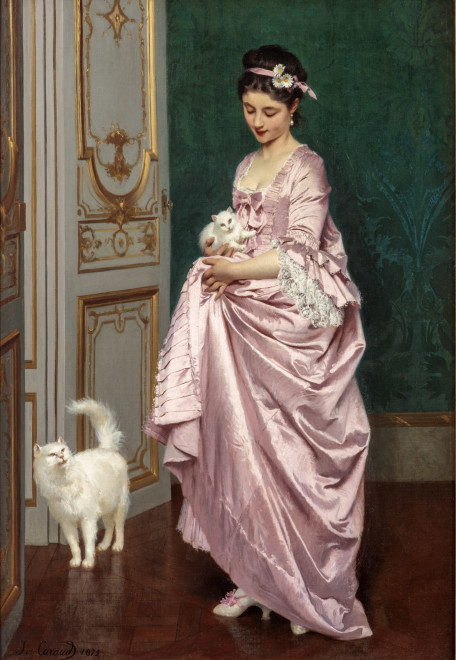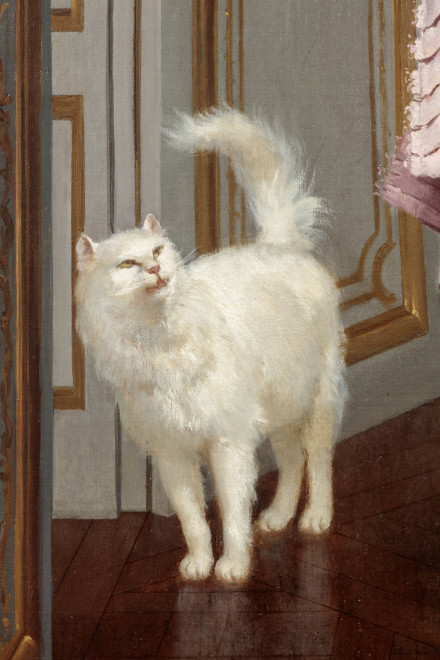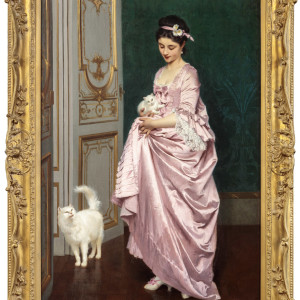From the shimmering pink silks of the young woman’s gown to the sheen of the polished floor, every highly finished detail of Elegant Young Woman with Two White Cats captures the richness of the past while reflecting the fashionable taste of Caraud’s patrons一 and the love of their pets.
Provenance
Sale: Waddingtons, Toronto, 6 June 1994, lot 1763, as Admiring the kitten
Acquired by the present owner at the above sale
Catalogue note
Famed nineteenth century author George Sand once wrote of her beloved pets: “Some say that cats are devils, but they behave badly only when they are alone. When they are among us cats are angels.” The varied personalities of felines are captured in Elegant Young Woman with Two White Cats, one of several works by Joseph Caraud illustrating the unique relationship between a domestic pet and its owner. Caraud’s prolific career began in 1843 when the artist, then twenty-two, submitted paintings to the Paris Salon in advance of formal training at the École des Beaux-Arts with Alexandre Abel de Pujol and Charles-Louis Lucien Müller. Like many of his contemporaries, Caraud travelled through Italy and then North Africa, gaining inspiration from both Renaissance masters and the daily life of Algeria. Absorbing these sources, by the late 1850s Caraud launched a new series of historical and genre works set in the eighteenth century. The subjects earned Caraud decades of acclaim at the Salon and from a late nineteenth century audience who believed the heyday of the European courts was the definition of elegance.
From the shimmering pink silks of the young woman’s gown to the sheen of the polished floor, every highly finished detail of Elegant Young Woman with Two White Cats captures the richness of the past while reflecting the fashionable taste of Caraud’s patrons一 and the love of their pets. As a visitor to the Salon noted, beyond the artist’s ability to paint “pretty maids of the last century” was his talent in capturing cats’ fur as sumptuous as “a bunch of silk.”[1] In the present work, besides their beauty, Caraud captures the cats’ unique personalities一 from the cautious attention of the mother cat to her mewling kitten held in the soft pinks of the young woman’s gown. When viewing such expressive details in another of Caraud’s paintings an American critic asked: “Does any hard-headed skeptic question whether cats can converse…. Who can look at this sweet girl and her pet Tabby, and doubt for an instant that they understand each other perfectly[?].... [Y]et these brevities are so well supplemented— on the maiden’s part by the glances of the eyes and the movements of the lips, — and on Tabby’s part by the curving on the spine and the eloquent gestures of the tail… not a word is uttered but is perfectly intelligible…. It is almost superfluous to call attention to the grace and perfection of drawing, the… beauty of composition, and the exquisite truth of expression which characterize the picture.”[2]






